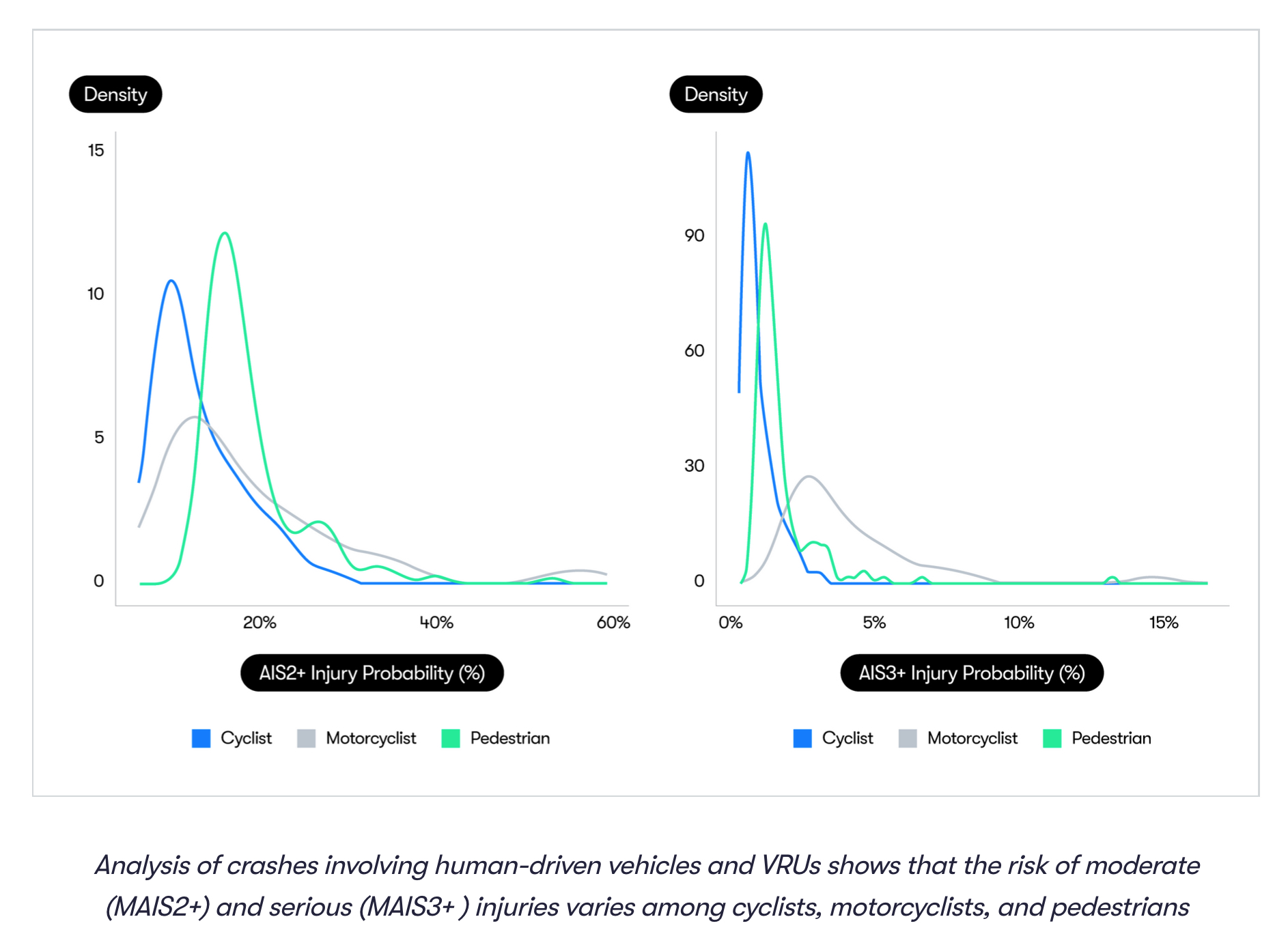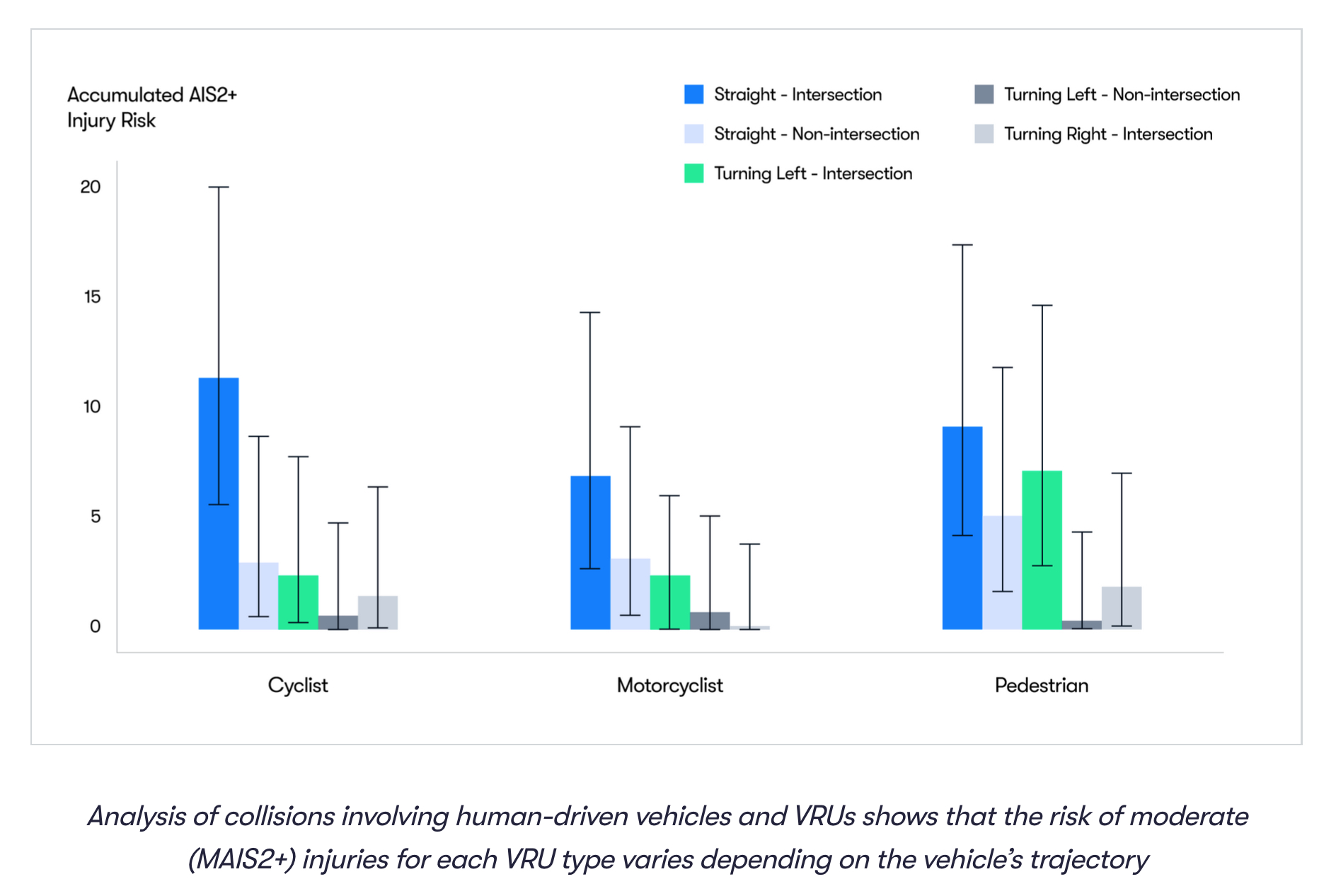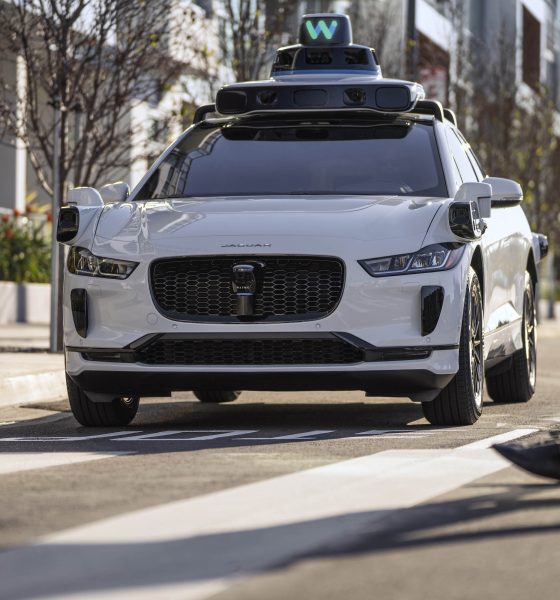Google’s driverless ride-hailing company Waymo has revealed the latest in a string of AI research-related announcements, this time sharing results from a first-of-its-kind study on collisions with vulnerable road users.
Waymo last week announced EMMA, its end-to-end, multimodal research model for autonomous driving, though it isn’t being used commercially at this point. The company also went on to detail its current approach to AI in a separate press release, noting its continued research into real-world models and AI training, a concept that may sound familiar to those who have followed Tesla’s Full Self-Driving (FSD) development.
On Monday, however, Waymo shared results from a study on Vulnerable Road Users (VRUs), in which the company reconstructed hundreds of collisions involving VRUs like pedestrians, cyclists, and motorcyclists. Waymo says that the research, as conducted in a partnership with Nexar, is the largest dataset of its kind in the U.S., providing key insights into real-world crash scenarios.
The companies analyzed dash camera footage of 335 collisions involving VRUs across six U.S. cities, leveraging over 500 million miles of driving data from Nexar for the research. The partnership also worked with Waymo research partner VUFO, which contributed to the below models on collision injury risk.
Credit: Waymo Credit: Waymo

According to the National Highway Traffic Safety Administration (NHTSA), there were an estimated 7,522 pedestrians and 1,105 cyclists who lost their lives in traffic crashes in 2022, though Waymo says VRU collision data remains scarce. The company explains this by noting that several VRU-related incidents don’t get reported to authorities or insurance firms, while the U.S. and other major accident databases lack data on these particular incidents.
“We’re excited to partner with Waymo on this cutting-edge research,” said Henrik Liers, Managing Director of Waymo research partner VUFO. “Our common work addresses critical limitations in existing models and provides a more precise, interdisciplinary approach to assessing injury risk for vulnerable road users. This is a significant contribution towards improving road safety.”
Tesla’s Full Self-Driving and end-to-end learning models
The recent developments from Waymo come as General Motors’s (GM’s) Cruise, Amazon’s Zoox, and Tesla’s Supervised Full Self-Driving (FSD) aim to offer similar robotaxi services. While Tesla doesn’t currently operate a paid ride-hailing service as Waymo does, it unveiled the two-seat, steering wheel-free Cybercab robotaxi last month.
Interestingly, Tesla’s FSD system has been touted by some as a more scalable solution, in no small part due to its end-to-end system that trains on millions of clips of real-time driving footage. Another factor is that FSD is available to any Tesla owner who purchases the software, meaning that its neural network stands to have a much wider potential research base than systems like Waymo—at least until services scale up substantially.
Tesla’s Cybercab isn’t expected to go into production until 2026, though FSD Supervised will certainly collect a substantial amount of data in the meantime. As of Tesla’s Q3 earnings call, the company has over 2 billion cumulative miles of data from FSD Supervised users, after it surpassed a milestone of 1.3 billion miles in April.
Tesla FSD V13 to implement features required for unsupervised driving: exec
What are your thoughts? Let me know at zach@teslarati.com, find me on X at @zacharyvisconti, or send us tips at tips@teslarati.com.
Need accessories for your Tesla? Check out the Teslarati Marketplace:

News
Tesla starts showing how FSD will change lives in Europe
Local officials tested the system on narrow country roads and were impressed by FSD’s smooth, human-like driving, with some calling the service a game-changer for everyday life in areas that are far from urban centers.

Tesla has launched Europe’s first public shuttle service using Full Self-Driving (Supervised) in the rural Eifelkreis Bitburg-Prüm region of Germany, demonstrating how the technology can restore independence and mobility for people who struggle with limited transport options.
Local officials tested the system on narrow country roads and were impressed by FSD’s smooth, human-like driving, with some calling the service a game-changer for everyday life in areas that are far from urban centers.
Officials see real impact on rural residents
Arzfeld Mayor Johannes Kuhl and District Administrator Andreas Kruppert personally tested the Tesla shuttle service. This allowed them to see just how well FSD navigated winding lanes and rural roads confidently. Kruppert said, “Autonomous driving sounds like science fiction to many, but we simply see here that it works totally well in rural regions too.” Kuhl, for his part, also noted that FSD “feels like a very experienced driver.”
The pilot complements the area’s “Citizen Bus” program, which provides on-demand rides for elderly residents who can no longer drive themselves. Tesla Europe shared a video of a demonstration of the service, highlighting how FSD gives people their freedom back, even in places where public transport is not as prevalent.
What the Ministry for Economic Affairs and Transport says
Rhineland-Palatinate’s Minister Daniela Schmitt supported the project, praising the collaboration that made this “first of its kind in Europe” possible. As per the ministry, the rural rollout for the service shows FSD’s potential beyond major cities, and it delivers tangible benefits like grocery runs, doctor visits, and social connections for isolated residents.
“Reliable and flexible mobility is especially vital in rural areas. With the launch of a shuttle service using self-driving vehicles (FSD supervised) by Tesla in the Eifelkreis Bitburg-Prüm, an innovative pilot project is now getting underway that complements local community bus services. It is the first project of its kind in Europe.
“The result is a real gain for rural mobility: greater accessibility, more flexibility and tangible benefits for everyday life. A strong signal for innovation, cooperation and future-oriented mobility beyond urban centers,” the ministry wrote in a LinkedIn post.
News
Tesla China quietly posts Robotaxi-related job listing
Tesla China is currently seeking a Low Voltage Electrical Engineer to work on circuit board design for the company’s autonomous vehicles.

Tesla has posted a new job listing in Shanghai explicitly tied to its Robotaxi program, fueling speculation that the company is preparing to launch its dedicated autonomous ride-hailing service in China.
As noted in the listing, Tesla China is currently seeking a Low Voltage Electrical Engineer to work on circuit board design for the company’s autonomous vehicles.
Robotaxi-specific role
The listing, which was shared on social media platform X by industry watcher @tslaming, suggested that Tesla China is looking to fill the role urgently. The job listing itself specifically mentions that the person hired for the role will be working on the Low Voltage Hardware team, which would design the circuit boards that would serve as the nervous system of the Robotaxi.
Key tasks for the role, as indicated in the job listing, include collaboration with PCB layout, firmware, mechanical, program management, and validation teams, among other responsibilities. The role is based in Shanghai.
China Robotaxi launch
China represents a massive potential market for robotaxis, with its dense urban centers and supportive policies in select cities. Tesla has limited permission to roll out FSD in the country, though despite this, its vehicles have been hailed as among the best in the market when it comes to autonomous features. So far, at least, it appears that China supports Tesla’s FSD and Robotaxi rollout.
This was hinted at in November, when Tesla brought the Cybercab to the 8th China International Import Expo (CIIE) in Shanghai, marking the first time that the autonomous two-seater was brought to the Asia-Pacific region. The vehicle, despite not having a release date in China, received a significant amount of interest among the event’s attendees.
Elon Musk
Elon Musk and Tesla AI Director share insights after empty driver seat Robotaxi rides
The executives’ unoccupied tests hint at the rapid progress of Tesla’s unsupervised Robotaxi efforts.

Tesla CEO Elon Musk and AI Director Ashok Elluswamy celebrated Christmas Eve by sharing personal experiences with Robotaxi vehicles that had no safety monitor or occupant in the driver’s seat. Musk described the system’s “perfect driving” around Austin, while Elluswamy posted video from the back seat, calling it “an amazing experience.”
The executives’ unoccupied tests hint at the rapid progress of Tesla’s unsupervised Robotaxi efforts.
Elon and Ashok’s firsthand Robotaxi insights
Prior to Musk and the Tesla AI Director’s posts, sightings of unmanned Teslas navigating public roads were widely shared on social media. One such vehicle was spotted in Austin, Texas, which Elon Musk acknowleged by stating that “Testing is underway with no occupants in the car.”
Based on his Christmas Eve post, Musk seemed to have tested an unmanned Tesla himself. “A Tesla with no safety monitor in the car and me sitting in the passenger seat took me all around Austin on Sunday with perfect driving,” Musk wrote in his post.
Elluswamy responded with a 2-minute video showing himself in the rear of an unmanned Tesla. The video featured the vehicle’s empty front seats, as well as its smooth handling through real-world traffic. He captioned his video with the words, “It’s an amazing experience!”
Towards Unsupervised operations
During an xAI Hackathon earlier this month, Elon Musk mentioned that Tesla owed be removing Safety Monitors from its Robotaxis in Austin in just three weeks. “Unsupervised is pretty much solved at this point. So there will be Tesla Robotaxis operating in Austin with no one in them. Not even anyone in the passenger seat in about three weeks,” he said. Musk echoed similar estimates at the 2025 Annual Shareholder Meeting and the Q3 2025 earnings call.
Considering the insights that were posted Musk and Elluswamy, it does appear that Tesla is working hard towards operating its Robotaxis with no safety monitors. This is quite impressive considering that the service was launched just earlier this year.










